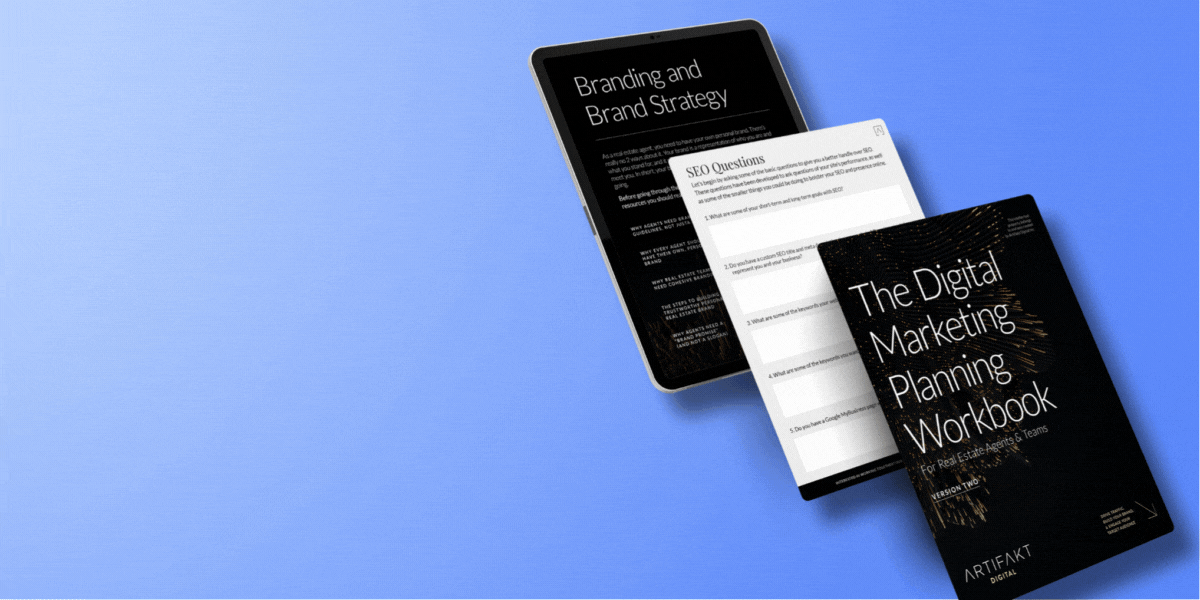Understanding Bounce Rate on Your Real Estate Website

Agents often ask us: what’s a good bounce rate to have on our real estate website? It’s a good question, but it doesn’t have a straightforward answer. Understanding your bounce rate is a bit confusing, and there’s a lot to know around when it’s a problem and when it’s just noise.
For those who don’t know, a bounce rate is the rate/percentage of people that visit your website and leave after viewing only one page.
If you have a high bounce rate, it means a lot of people leave your site after visiting one page. If you have a low bounce rate, it means people are sticking around to look at other pages before leaving.
Is it safe to say that having a low bounce rate is a good thing? Not so fast. Like I said, it’s not as straightforward as you might think.
The industry standard states that somewhere around a 55% bounce rate is average. That’s really general information, though, and it isn’t that useful unless you’re measuring it in a specific way. The ideal way is going to be based on your website and your online marketing strategy.
Why Does Your Bounce Rate Matter?
Your bounce rate is going to play a factor in your search engine ranking. How important is up for debate, as Google (and other search engines) keep that information close to the vest.
That said, if you have a low bounce rate, it means that users are visiting more than one page of your side. For a search engine, this suggests that your site adds value to someone’s online experience.
Ultimately, it means that someone came to your website and found it interesting enough, or that the page flow was thought-out enough to facilitate their continued journey through it.
If it’s high, it suggests your website:
- Lacks structure and strategy
- Doesn’t offer user-centric value
- Offers an unclear path to more content
Bounce Rate & User Experience
Bounce rate is also determined by user experience.
Depending on your page structure, website design, and what you’re trying to get people to do, if they leave without viewing anything else, it might be a bad sign.
At the same time, there are a lot of strategies that intentionally force users to leave without asking anything else of them (like with a non-exit-point landing page pushed to by advertising).
For example, imagine that you run a lot of Facebook ads as part of your marketing strategy, for each new listing you have. Let’s say you have a Facebook audience created and finely tuned and you know they’re interested in seeing listings.
Building on that, you also have a retargeting campaign in place to keep them engaged across other platforms because you’re certain they’ll only come to your website through Facebook, click the listing, see the information, and then leave.
Or, perhaps you have a landing page for your listing that doesn’t have any exit options at all: it’s simply a page showing the information about that listing with a simple form to get more information.
In all these situations, your bounce rate is likely to be very high, but does that matter? If you have a plan of how you’ll further market each of those people, does it matter if you have a high bounce rate on that page?
You may have a high bounce rate by design. It’s when you don’t have a marketing strategy in place and you have a high bounce rate that you can run into trouble…
Segmenting Your Bounce Rate is Key
It’s not worthwhile to look at your overall bounce rate.
That’s because there are a whole host of factors to consider. Your bounce rate becomes useless because it lumps everything together, and doesn’t consider the purpose of some pages versus others.
Overall, you need to focus on segmentation. That means taking your bounce rate and applying it to individual pages, more specifically the ones where a bounce rate of any kind makes sense.
You can even break it down further, segmenting by:
- Page Type
- Browser Type
- Device Type
If you were to set up a segment in Google Analytics for mobile visitors, you may find that the bounce rate is high on mobile but low for desktop users. This would tell you that there is some sort of problem with how your site is structured for mobile visitors.
A bounce rate is informative when it is used strategically, and when that same data is interpreted correctly. Chances are you’ll have multiple audiences visiting your site in numerous ways, and where they find value (and where they don’t) is going to differ.
That’s why your bounce rate is a great place to start. It can tell you if a user finds immediate value with your content, whether they are attracted to the design of your site, or whether your brand resonates.
If they dig deeper, they are more likely to convert, so your bounce rate can uncover problems worth solving to build your business.
By segmenting, you can put together a plan to make meaningful plan around how you can improve your website, your visitors, and your digital marketing strategy.
How Can You Improve Your Bounce Rate?
First, here’s the most important thing: your real estate website needs strategic, thoughtful, and “value-add” content that guides your user on your journey. It must represent you, your business, and your methods.
If any of this is missing, it’s likely to turn someone off immediately and will result in an astronomical bounce rate. We see it all the time – if you write well, and with your audience in mind, it’s a great way to set yourself up for success. It’s just like the old saying: quality over quantity.
★ Interested in SEO? Read this post next on how to get started building a well-rounded SEO strategy for your real estate website. Click here to learn more.
If your bounce rate really matters to you, and you want to improve it, the first place to start is by taking a good, hard look at your website.
Ask yourself: would I want to see more than one page on this website? Am I offering content and design that flows from page to page and compels users to see what’s next? Is there a way for the visitor to get from a page that they land on to additional content that interests them?
Start by looking at the pages that your visitors are landing on. From there, you can determine if they can, and would want to, engage with more of your content. It can completely change your bounce rate.
Want to plan your digital strategy on your own, and set your business up for success? Download our workbook: ‘The Digital Business Planning Workbook’. It’s a self-guided, interactive, strategic workbook where you answer questions about branding, SEO, content, design, and a lot more, so you can set goals for your website and your digital marketing efforts. And, it’s free to download.










